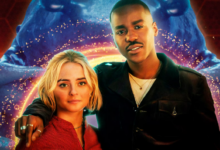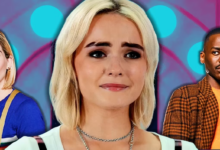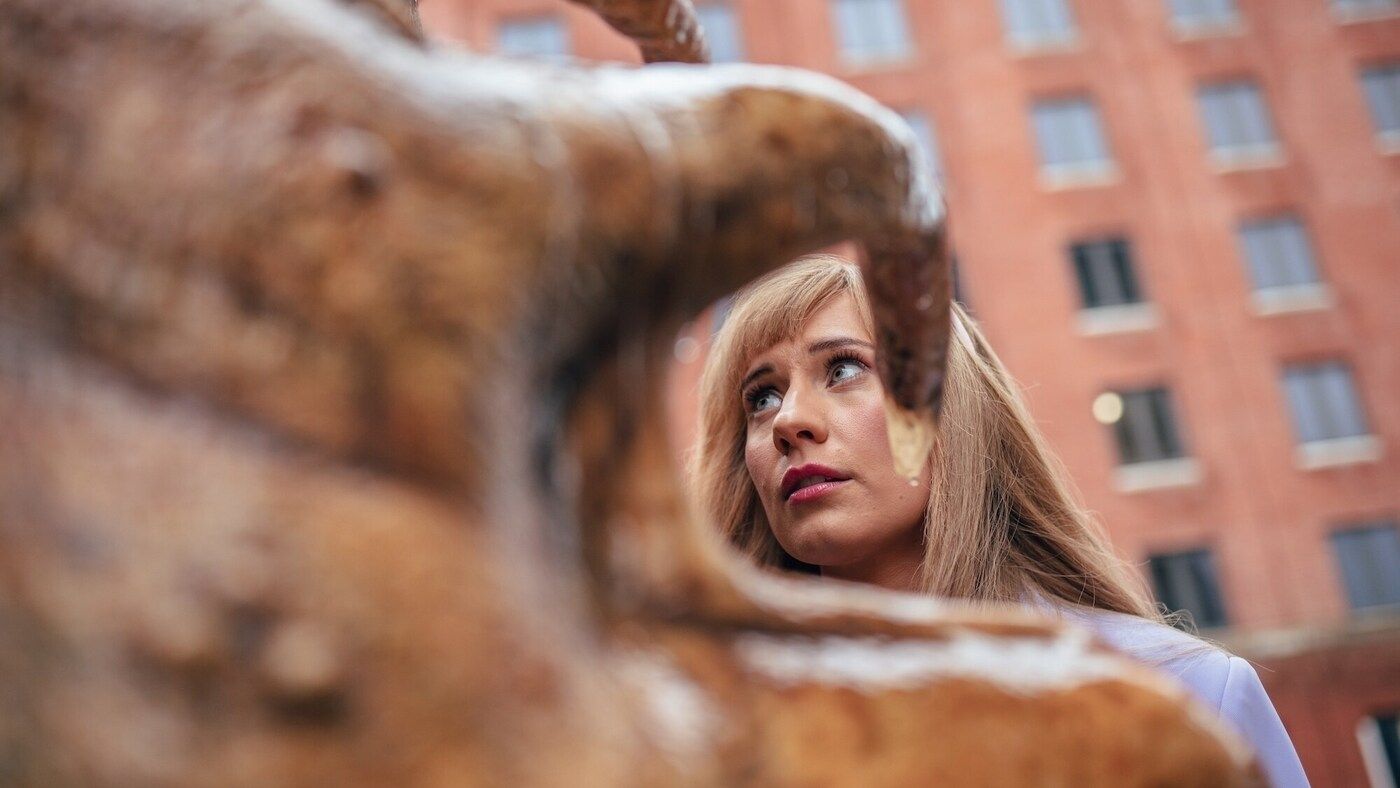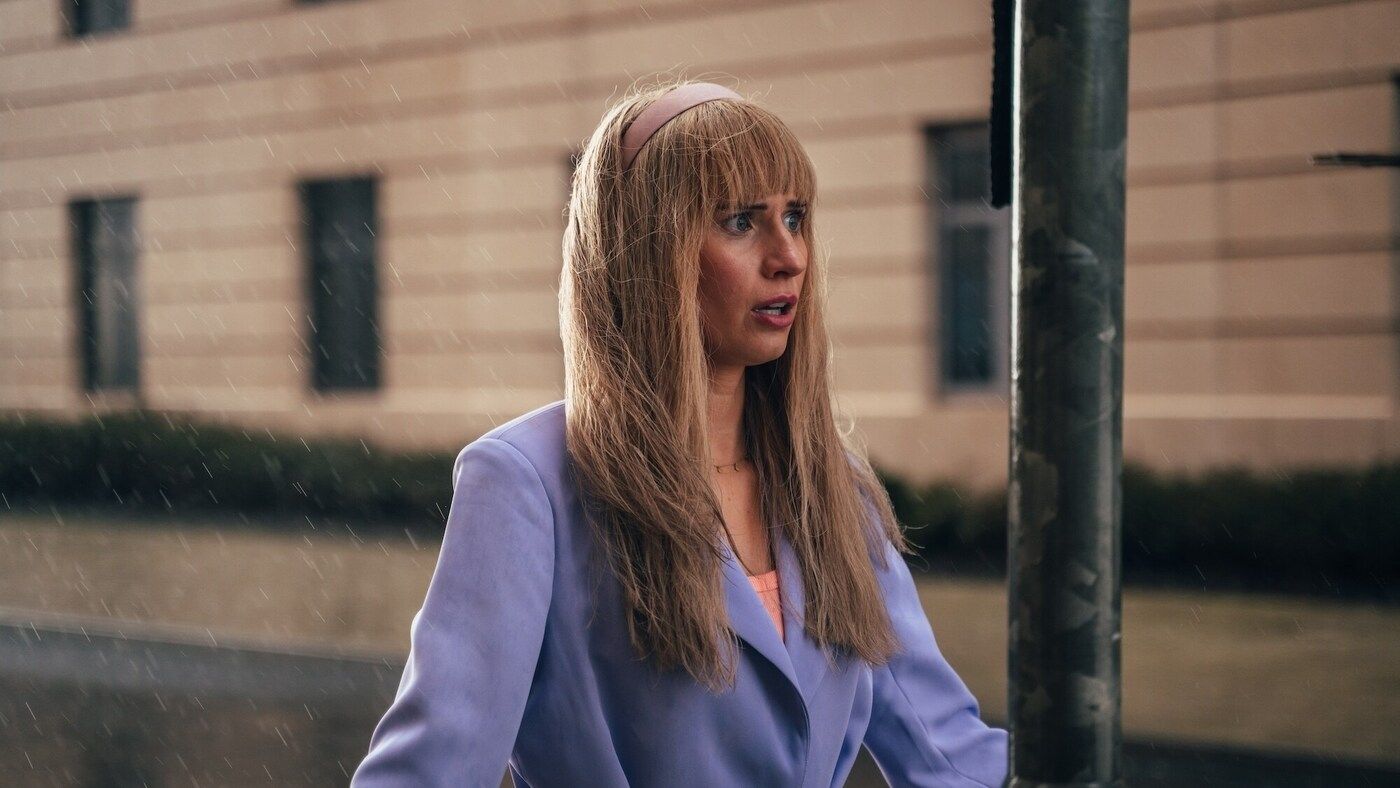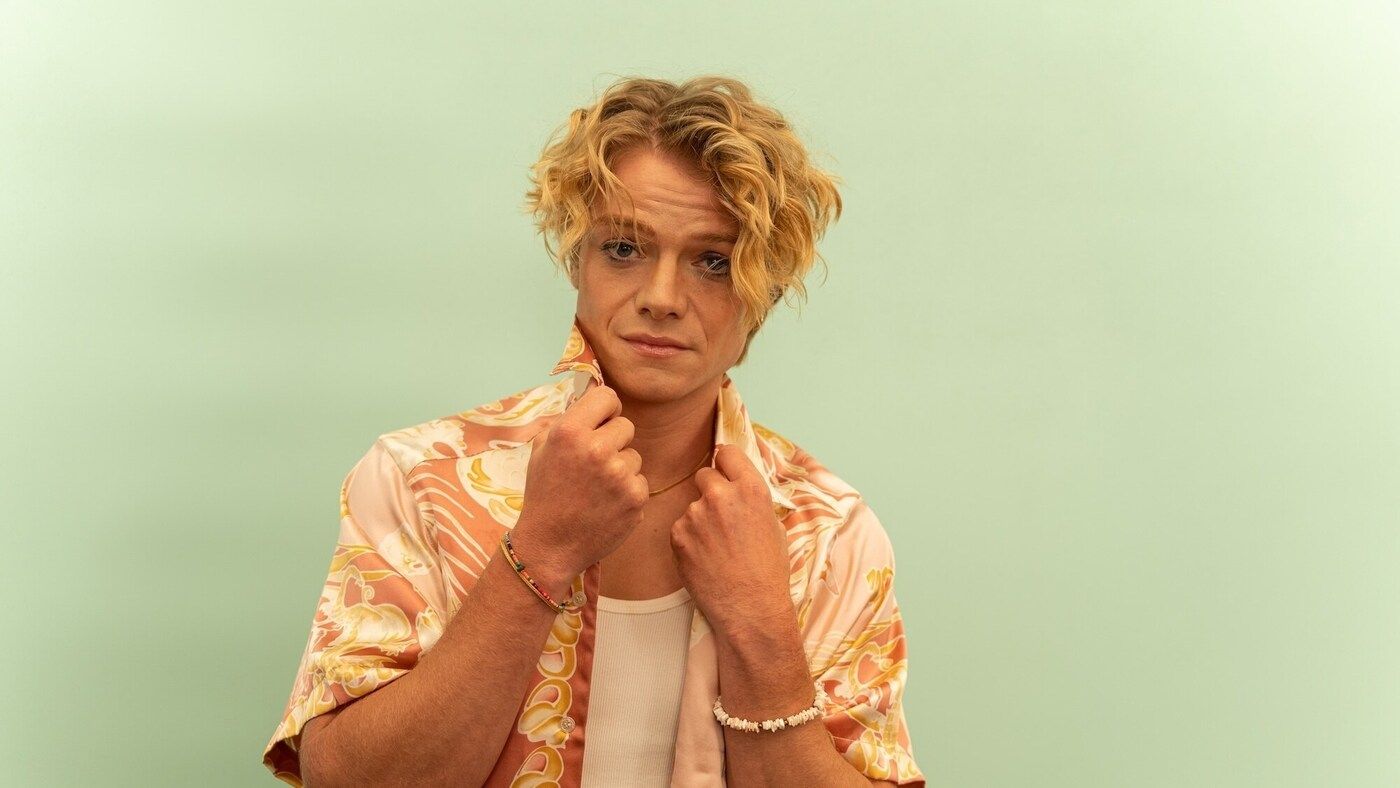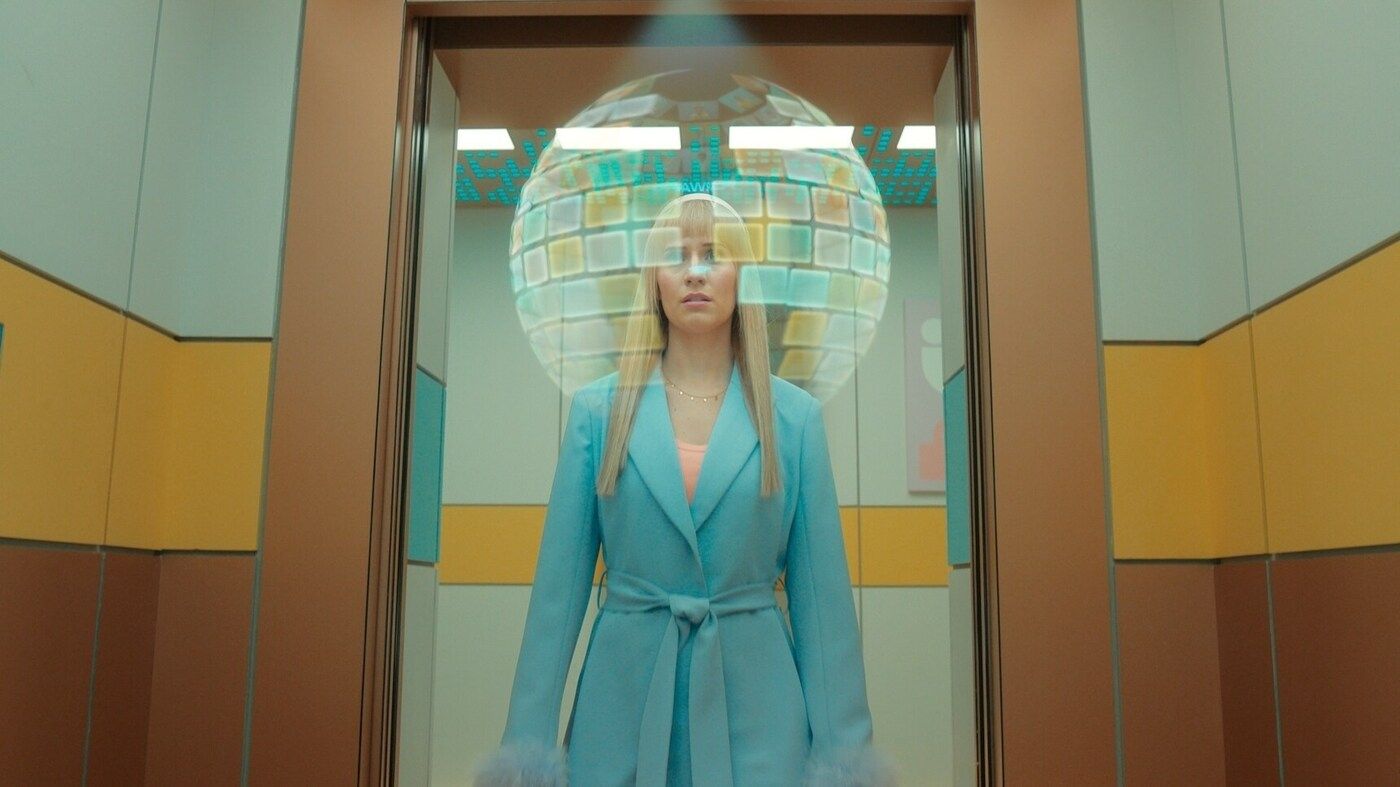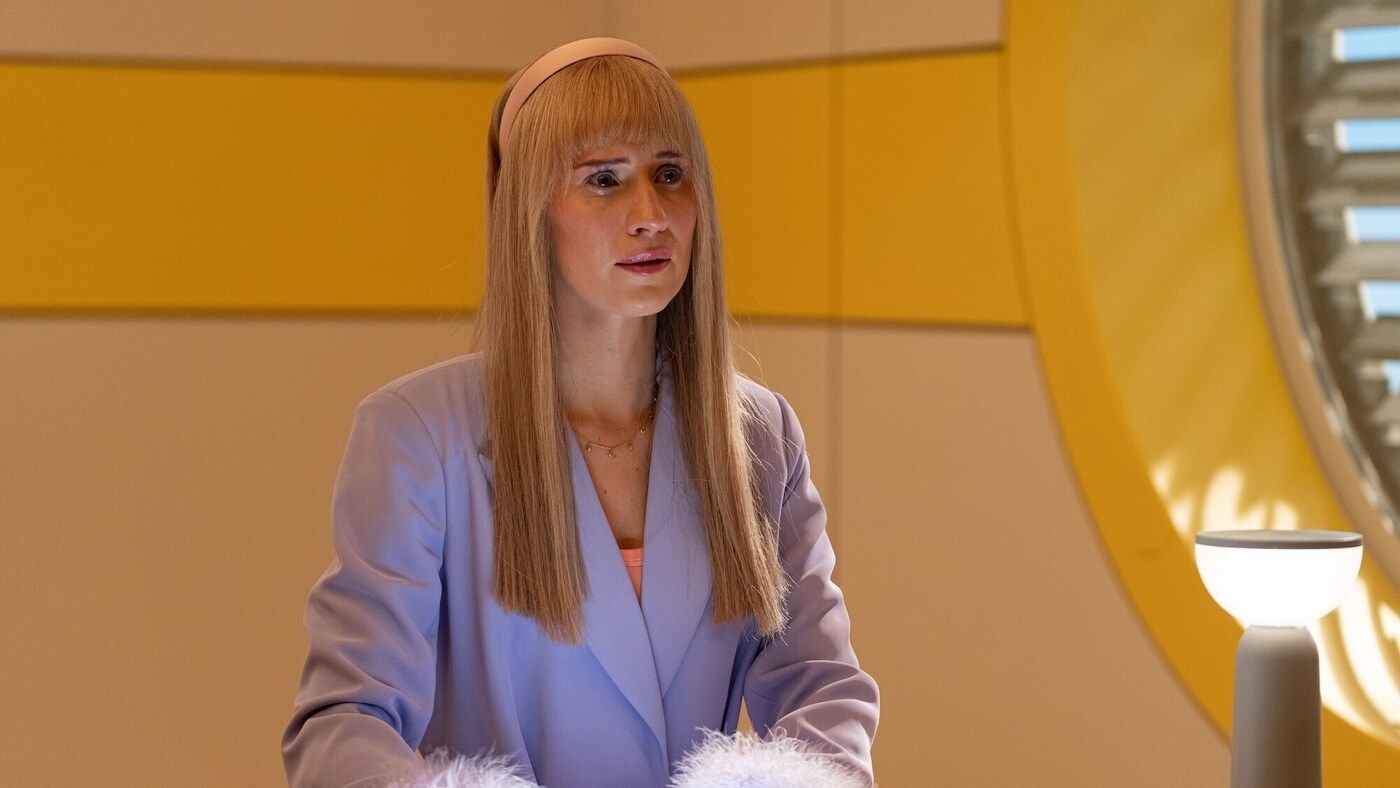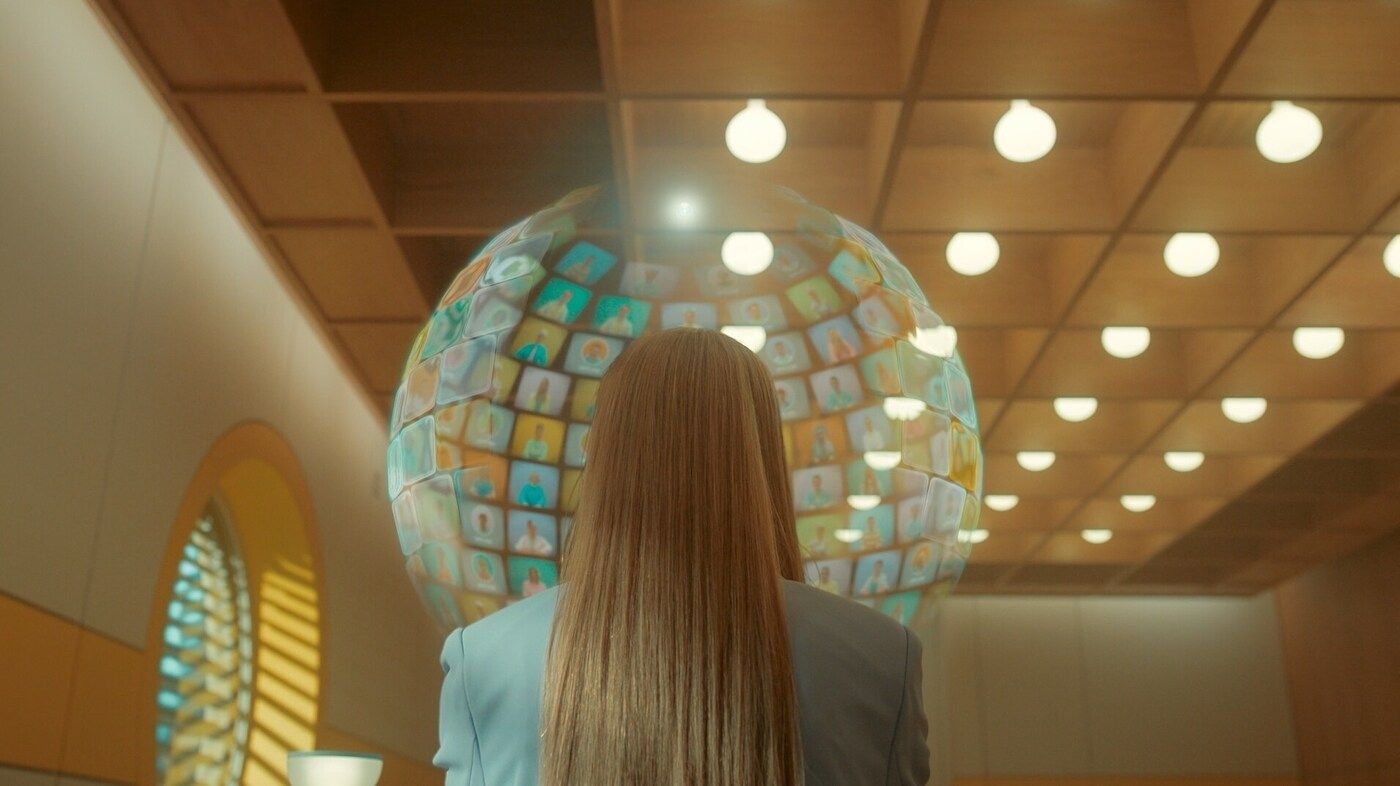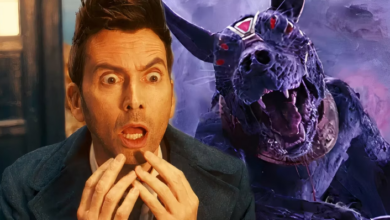Doctor Who Series 14, Episode 6 Review: Russell T Davies Crafts a Horrifically Sad Episode
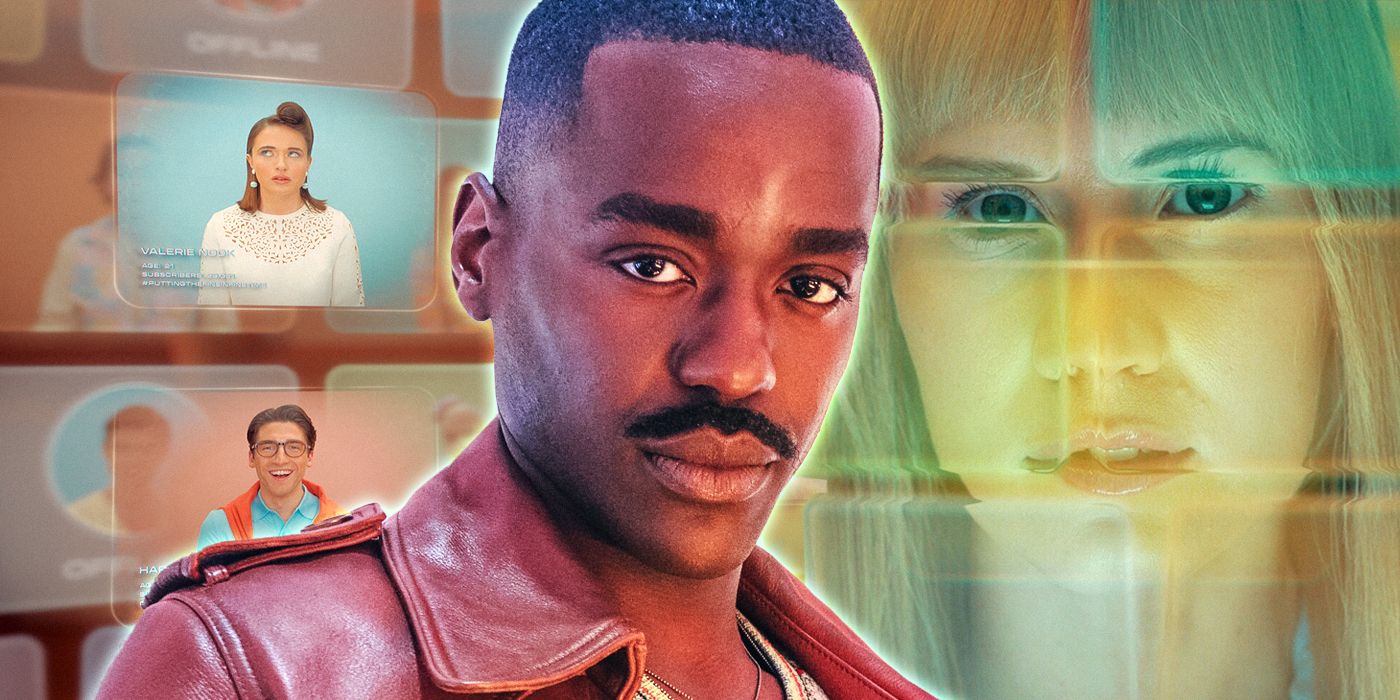
Doctor Who Series 14, Episode 6, “Dot and Bubble” is emblematic of the genius of Russell T Davies. The reason why fans were so excited to have Davies back as showrunner is that he always knows what he’s doing. Not just in the sense that he created the new Doctor Who that they all know and love, but that every story choice he makes is deliberate — and usually designed to shock the audience. Even though viewers are aware that something’s coming, Davies is always able to get one over on them.
“Dot and Bubble” is classic Davies in that sense. Audiences know that what starts out as a vapid, upbeat adventure for the guest character of Lindy Pepper-Bean (played by Wedding Season‘s Callie Cooke) won’t stay that way. There’s something menacing right around the corner. And even though The Doctor and Ruby Sunday play minimal roles in the episode, the story is still effective because viewers understand the journey Davies is taking them on, down to the bitter end.
Doctor Who Sharply Comments on Social Media
Series 14, Episode 6 Takes the Idea to the Extreme
“Dot and Bubble” is Davies’ sharp critique of the global social media obsession. He’s certainly not the first sci-fi writer to take social media and essentially weaponize it; the cringe-inducing Black Mirror Season 3 episode “Nosedive” is but one other example. Yet the title of this Doctor Who story refers to the pieces of technology Lindy can’t do without: her personal computer Dot and the Bubble it creates that controls her whole life, from video chats with friends to even the most basic human functions. It’s clear the Bubble is also named for the fact that it keeps Lindy in a metaphorical bubble — until the Doctor awakens her to the harsh reality that almost everyone around her is being eaten alive.
Lindy Pepper-Bean: What am I supposed to do? Look?
Davies clearly has fun sending up social media, but it’s always with a razor’s edge. The bright colors, the upbeat music, and even the name of the community — Finetime — are all so tongue in cheek, with the episode’s supporting characters all over the top. A few jokes about the Dot as it relates to Lindy’s bodily functions fall very flat, but are still indicative of Davies’ intent to point out how ludicruous everything is, and how it must therefore go horribly wrong. In contrast, the unnamed monsters of the week are exactly the opposite: big, dark-colored, disgusting space bugs. This playing into even the smallest details is why Davies is such a memorable writer.
The underlying message of “Dot and Bubble” is one sci-fi audiences have heard plenty of times before, and viewers will be able to guess the way it ends. But Davies is so clever in the way he unfolds the story, the horror-style approach he takes to dismantle Lindy’s fantasy world, that it doesn’t matter. There’s even an interesting use of Brian Hyland’s “Itsy Bitsy Teenie Weenie Yellow Polka Dot Bikini,” similar to how X-Men ’97 Season 1, Episode 7, “Bright Eyes” utilized Sheb Wooley’s “Purple People Eater.” What seems like a harmless pop song becomes an ominous bit of underscore. Even though the whole episode feels inevitable, it’s a treat to see how the trick is done.
How Doctor Who Works Without the Fourteenth Doctor
The Doctor and Ruby Sunday Have Smaller Roles in ‘Dot and Bubble’
Some Doctor Who fans will be disappointed by the fact that The Doctor is a supporting character in “Dot and Bubble,” which is very clearly Lindy’s episode. Both The Doctor and Ruby Sunday only appear through Finetime video chats with Lindy until the last few minutes of the episode, which means that the whole thing rests entirely on Callie Cooke’s performance. Some viewers will sympathize with Lindy as a scared young woman who literally can’t even walk without being told what to do. Others will loathe the character for how dense and selfish she is; it’s a truly unforgiveable moment when Lindy betrays her supposed idol Ricky September. Ricky has saved Lindy’s life once and is trying to do so again, but she has zero hesitation about offering him up to the homicidal Dot and lies about his death afterward.
But Cooke does a fine job of creating Lindy as the ultimate Valley Girl from Finetime, from her ridiculous slang to her exaggerated expressions. The other lead in the episode is a pitch-perfect Tom Rhys Harries, recognizable from his role in Guy Ritchie’s underwhelming The Gentlemen, as Ricky; he doesn’t get nearly enough character development, due to the fact that he enters later in the action. Yet even in his relatively brief screen time, he makes clear that Ricky is the only good person in the entire community — which is a valuable story point. Whether the Doctor Who fans love Lindy or hate her, they will care about Ricky, and they at least understand Lindy’s fears.
Lindy Pepper-Bean: I thought this was the worst day of my life, but maybe it’s the best.
Ricky September: …There’s still thousands of people being eaten alive.
Ncuti Gatwa and Millie Gibson don’t really come alive until their characters are physically in the same space with Lindy. Their video appearances are just too awkward and too brief, as the Doctor and Ruby try to help Lindy along, to have a great impact. But when they’re seen in the flesh, they make up for that and then some. Gatwa’s portrayal of incandescent anguish and rage when the few survivors of Finetime refuse The Doctor’s offer to travel safely in the TARDIS is one of his absolute best scenes; he pours everything into that moment, and that massive reaction is why the ending doesn’t feel like just another shock-value conclusion. “Dot and Bubble” can exist without the Doctor and Ruby because it’s about the message it’s sending, not any one character — but Gatwa still leaves a searing mark on the episode.
Is Doctor Who’s ‘Dot and Bubble’ More Than a Cynical Worldview?
What Series 14, Episode 6 Says Is Bigger Than What It Does
Doctor Who Series 14, Episode 6, “Dot and Bubble” will possibly also get some criticism for being yet another TV episode that has to choose the bad ending. Even though its sci-fi allegory and the message underneath — that people can’t look past their own proverbial bubbles — are both very clear, it’s still part of a trend where TV shows are almost relentlessly dark. And that stings more in Doctor Who, which lives and breathes hope and possibility. Not every trip on the TARDIS has to end well, but some audiences might dislike that Series 14 has already been serving up a fair amount of pain.
The Doctor: You don’t have to like me. The only important thing is to get you out.
Does that mean “Dot and Bubble” isn’t worth watching? Far from it. Davies telegraphs off the bat that he’s going to tell a story about how the supposedly perfect things wind up being terribly tragic, so it’s not as if the audience doesn’t know what they’re in for. Everything, including the survivors’ decision to go off to their deaths in the Wild Woods and the last shots of Lindy emotionlessly looking back at the stunned Doctor, is meticulously planned. When The Doctor tells Lindy that the monsters are the citizens’ fault — that the Dot has “learned to hate you” and thus created the creatures to eat people — that hatred has to come from somewhere. Lindy allowing Ricky to be murdered functions as a point of no return; once he’s gone, so is any hope for the rest of the episode. In fact, there might be a whole other section of viewers who don’t care if the Finetime citizens get eaten after that and after how they not only refuse, but insult The Doctor, saying that he’s “not one of us” and that Lindy shouldn’t get “contaminated.”
This isn’t the most exciting or memorable Doctor Who Series 14 episode, and it has little connection to the rest of the season. The only tidbit in that respect is The Doctor mentioning that Lindy’s mother is “the face of the ambulance on Kastarion 3” from Episode 4. But Davies does what he set out to do, and does it cleverly and without pulling any punches. “Dot and Bubble” showcases Davies’ storytelling and Gatwa gets one of his most outstanding moments, even if it’s Doctor Who that doesn’t center on The Doctor.
